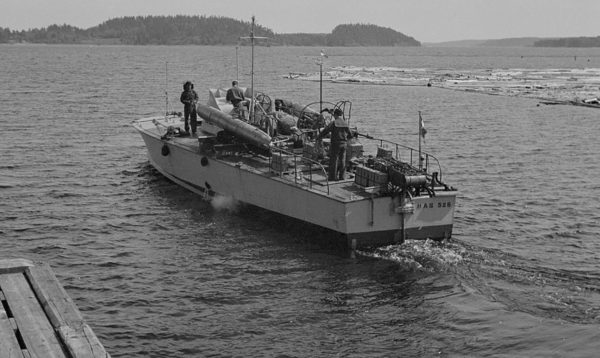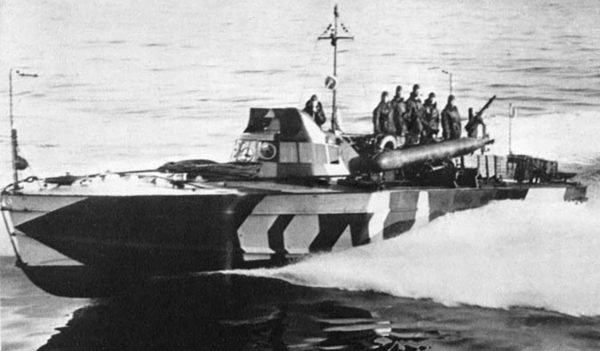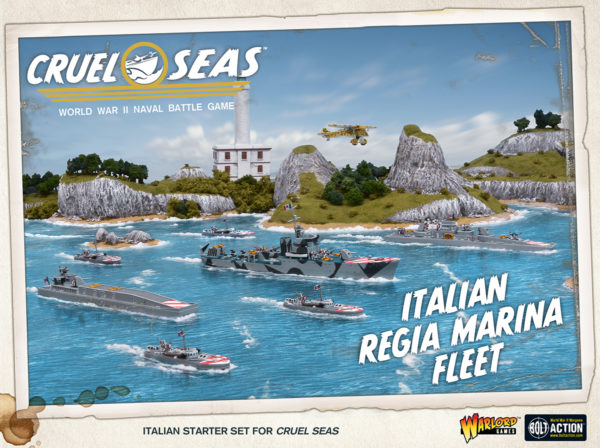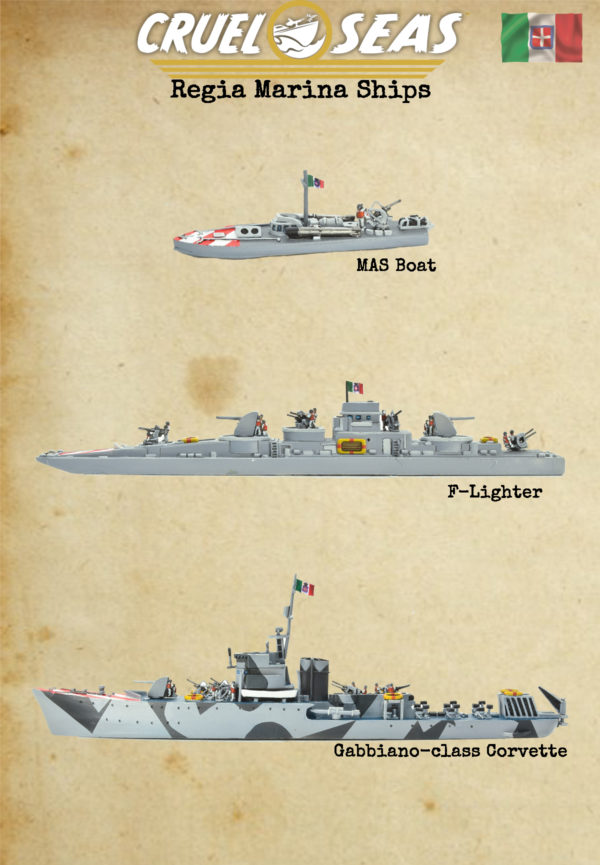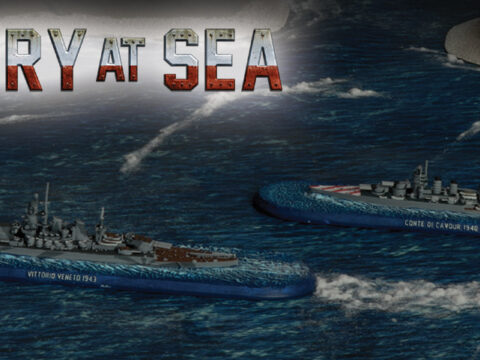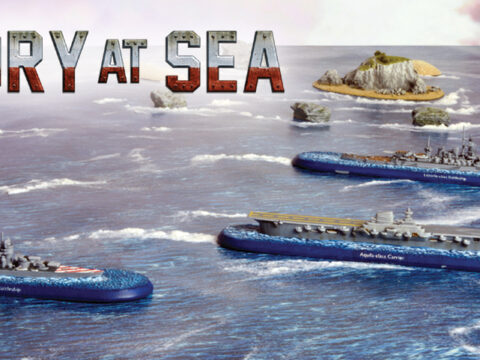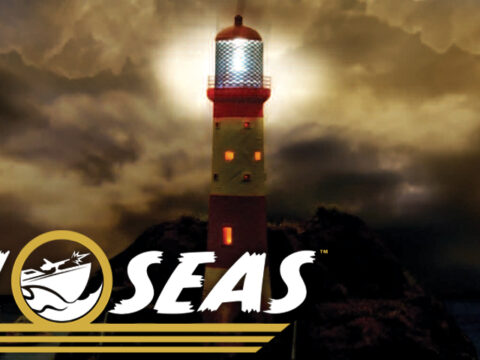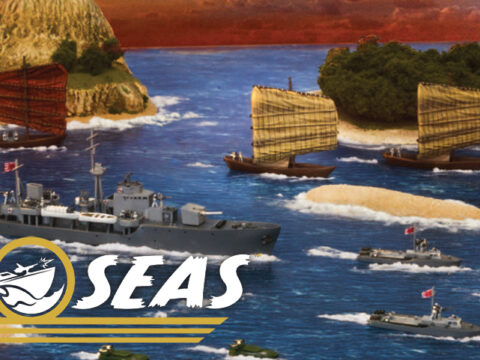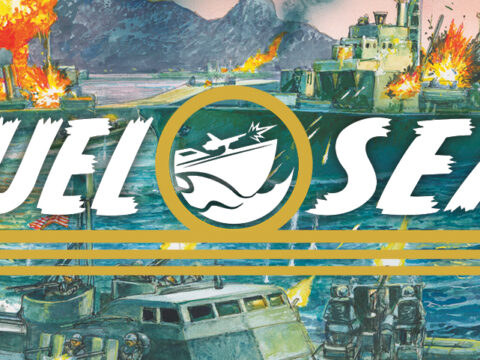We’re heading for sunnier climes in Cruel Seas this week, with a look at the Italian Regia Marina. Renowned for their speed, the MAS boat takes to the seas!
The Italian Navy was a professional force that had high hopes for its performance in WW2. In WWI it performed well enough, its small torpedo boats famously sinking the Austrian battleship SMS Szent Istuan, and a human torpedo, Mignatha, sank the flagship Viribusanitas, perhaps a premonition of what would transpire in the later war. Italian light forces were to gain a reputation for skill, daring and great bravery under Mussolini and his cohorts.
By the start of the war, as well as capital ships, it fielded 59 destroyers and 67 torpedo boats, a fast class of small destroyers. The navy, modern in other ways was short of fuel, had no naval air arm, and had no completed aircraft carriers, unlike their British foes.
The Italian fleet had an efficient submarine arm, feeling confident enough to even ‘lend’ the Germans 32 submarines in Bordeaux who went on to sink 109 allied ships on the Atlantic – a satisfactory performance.
The Black Sea & Lake Lagoda
In May 1942, at Germany’s request, the RM deployed four 24 tonnes Motoscafo Anti Sommergibile, or mas boats, 6 CB midget submarines, 5 torpedo boats and 5 explosive boats to the Black Sea, and appear to have done well against merchantmen, barges and even a cruiser. The rump of the flotilla was handed over to the Kriegsmarine and Romania.
Another exotic posting for the Italian light fleet was an expedition to Lake Lagoda and the Leningrad Siege. 4 Mas boats, naval detachment K, teamed up with German and Finnish forces to blockade Russian forces. Mas boats 526 527 528 &529 took part with minelayers, Siebel ferries and Finnish patrol boats, the whole force called Einsatzstab Fahre Ost, a fascinating flotilla to collect and game with!
MAS (Motoscafo Armato Silurante)
The Italian Navy, as we have seen, were early enthusiasts of the MTB. The Motoscafo Armato Silurante or MAS boats weighed between 20 and 30 tons and were smaller than most other nations. They were, however, good boats and gave the allies a tough time. They had a ten-man crew; their principal armament was 2 torpedoes and a 20mm Breda A/A on the rear deck.
They were fast, very fast and could make up to 45 knots, outrunning all PT boats and British MTBs. By 1940 48 of the MAS 500 class were available.
Though fast, they were more fragile than the other boats and performed poorly in rough weather. An Italian coastal force is an attractive force to collect. The MAS boat, your main strike force must use its speed and small size to survive, but although lightly armed and fragile, they are inexpensive boats to add to your fleet, overwhelm them with numbers and manoeuvring, then hit hard with your torpedoes!
In a history of the Italian navy, the achievements of the light forces must take first place. These small units used explosive motor boats, midget submarines and frogmen to penetrate enemy harbours and raid shipping lanes. They truly were an elite force, some of whom after the armistice fought on for the Germans and others who went to fight for the allies.
The Regia Marina in Cruel Seas
The Regia Marina Fleet Contains:
- 4 x MAS boats MTBs (metal)
- 1 x Italian MZ Motozattera (resin and metal)
- 1 x Marinefährprahm – F-Lighter (resin and metal)
- 1 x Gabbiano-class corvette (resin and metal)
- 1 x CR 32 Fighter (metal)
- Ship Cards
- Wakes
- Plastic Torpedo markers


